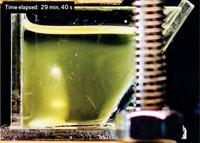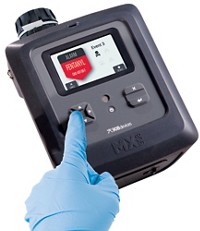Advertisement
Grab your lab coat. Let's get started
Welcome!
Welcome!
Create an account below to get 6 C&EN articles per month, receive newsletters and more - all free.
It seems this is your first time logging in online. Please enter the following information to continue.
As an ACS member you automatically get access to this site. All we need is few more details to create your reading experience.
Not you? Sign in with a different account.
Not you? Sign in with a different account.
ERROR 1
ERROR 1
ERROR 2
ERROR 2
ERROR 2
ERROR 2
ERROR 2
Password and Confirm password must match.
If you have an ACS member number, please enter it here so we can link this account to your membership. (optional)
ERROR 2
ACS values your privacy. By submitting your information, you are gaining access to C&EN and subscribing to our weekly newsletter. We use the information you provide to make your reading experience better, and we will never sell your data to third party members.
Forensic Science
Swab technique identifies opioids without opening packages
Mass spec method could help police and other first responders screen drug evidence without exposing themselves to dangerous substances like fentanyl
by Kerri Jansen
October 4, 2019
| A version of this story appeared in
Volume 97, Issue 39

The synthetic opioid fentanyl is so potent that without proper safety procedures, even opening a bag of the powder to test its contents can be dangerous. To give police and other first responders a faster, safer way to screen suspicious packages for opioids like fentanyl, scientists at the US National Institute of Standards and Technology have been designing sensitive analytical tools. Previously, a team at NIST demonstrated that trace amounts of fentanyl, collected using a simple wipe from the outside of a package, could be detected in seconds using thermal desorption direct analysis in real time mass spectrometry. In collaboration with forensic labs in Maryland and Vermont, NIST researchers have now showed that their method allows them to accurately predict the contents of a suspected drug package 92% of the time (Forensic Sci. Int. 2019, DOI:10.1016/j.forsciint.2019.109939). The team analyzed swabs from 191 pieces of drug evidence, mostly plastic bags, and compared the results with extracts from the package contents. Although cross contamination and high levels of a cutting agent led to a few false positives and false negatives, respectively, the technique worked in all cases in which an opioid in powder form was present.





Join the conversation
Contact the reporter
Submit a Letter to the Editor for publication
Engage with us on Twitter